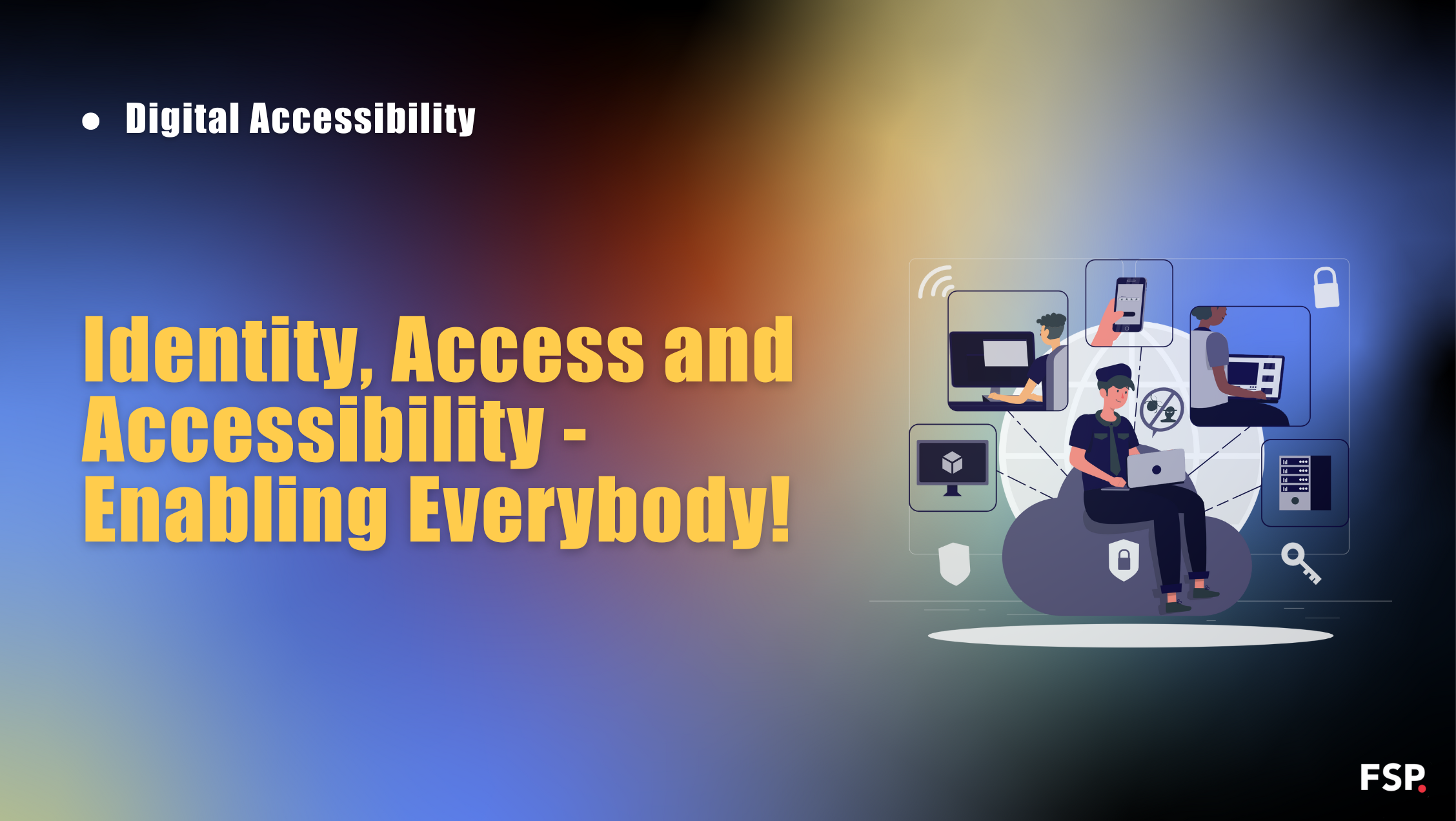FSP recently ran two events focused on accessibility: one in July and another in October 2024. A key takeaway from both was that accessibility isn’t just about ticking compliance boxes or making accommodations; it’s about creating an environment where people can do their best work. In Identity and Access Management (IAM), FSP have been talking about user experience for a while, but there’s a fresh perspective: extending that focus beyond just IT access and equipment requests. It’s time to think of IAM as a way to meet a wider range of accessibility needs, making reasonable accommodations as seamless as accessing IT systems.
In the world of IAM, things used to be simpler. The focus was on automating processes like handling joiners, movers, and leavers. This made IAM about efficiency, consistency, and security. You want to make sure people get access when they join, adjust it when they change roles, and lock it down when they leave. It’s a model built around systems, not people.
But over time, the landscape has changed. Now, it’s not just about managing access efficiently; it’s about improving the user experience. You realise pretty quickly that the better you make the experience, the more productive people are. When users get what they need quickly and easily, they can focus on their work. When the process flows smoothly, workarounds drop off. Workarounds bring risks; they lead to shadow IT, open doors to unnecessary access, and quickly turn compliance into a nightmare.
CIAM
The funny thing is, in customer/citizen identity and access management (CIAM), this shift to user experience happened a lot earlier. Businesses figured out that if a customer gets stuck while trying to make a purchase, they might just walk away. So, the goal became reducing friction; make the process so smooth that nothing stands between the customer and what they want to buy. If it’s too slow or too confusing, they’re gone.
The parallel with employees is obvious: your workforce is your human capital, and they need the same kind of seamless access to do their jobs well. But there’s more to it than that. Some of your employees need more than just efficiency; they need reasonable adjustments. Accessibility, at its core, is about recognising that different people need different types of support to perform at their best.
Joining Accessibility and IAM
This is where accessibility and IAM come together. Think about it – access isn’t just about logging on. It’s about giving everyone what they need to be effective. When we talk about enabling a workforce, it’s not just about making sure people get into the right systems, it’s about making sure they get in easily, comfortably, and in a way that suits their needs. For someone with visual impairments, this might mean adapting the interface for screen reader compatibility. For others, it could involve supporting assistive technologies or offering a more flexible authentication process, like a facial recognition option or simplified multi-factor authentication, so they can log in seamlessly.
If you’ve ever designed a good IAM system, you know the goal is always the same: get the right access to the right person at the right time. But if you’re thinking about this in the context of accessibility, the problem takes on a new dimension. It’s not just about securing access; it’s about empowering people by recognising and meeting their individual needs.
Accessibility is a natural next step in the evolution of user experience. Just as we’ve moved from security-focused identity management to user-centric systems that optimise productivity, we now need to think about accessibility as part of the same continuum. This is where digital transformation really shows its value; when it’s not just about doing things faster, but about doing things better for everyone.
So what’s the takeaway?

If you’re planning your IAM roadmap and you’re thinking about your employee experience, ask yourself: how well do you know your workforce? Do you understand their needs? More importantly, are you set up to meet those needs in a way that’s simple and seamless? If not, you’re missing an opportunity; not just to comply with regulations, but to improve your team’s effectiveness and morale.
At the end of the day, accessibility is about enabling your workforce. It’s about understanding that people work best when they’re supported properly, and that includes making it easy for them to access what they need, when they need it, in a way that works for them.
If you would like to start your accessibility journey or you’re thinking about how to manage access or just improve your employee experience, don’t hesitate to reach out to us. Please visit FSP and we can talk.
Read our recent Accessibility White Paper HERE

